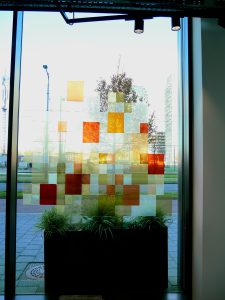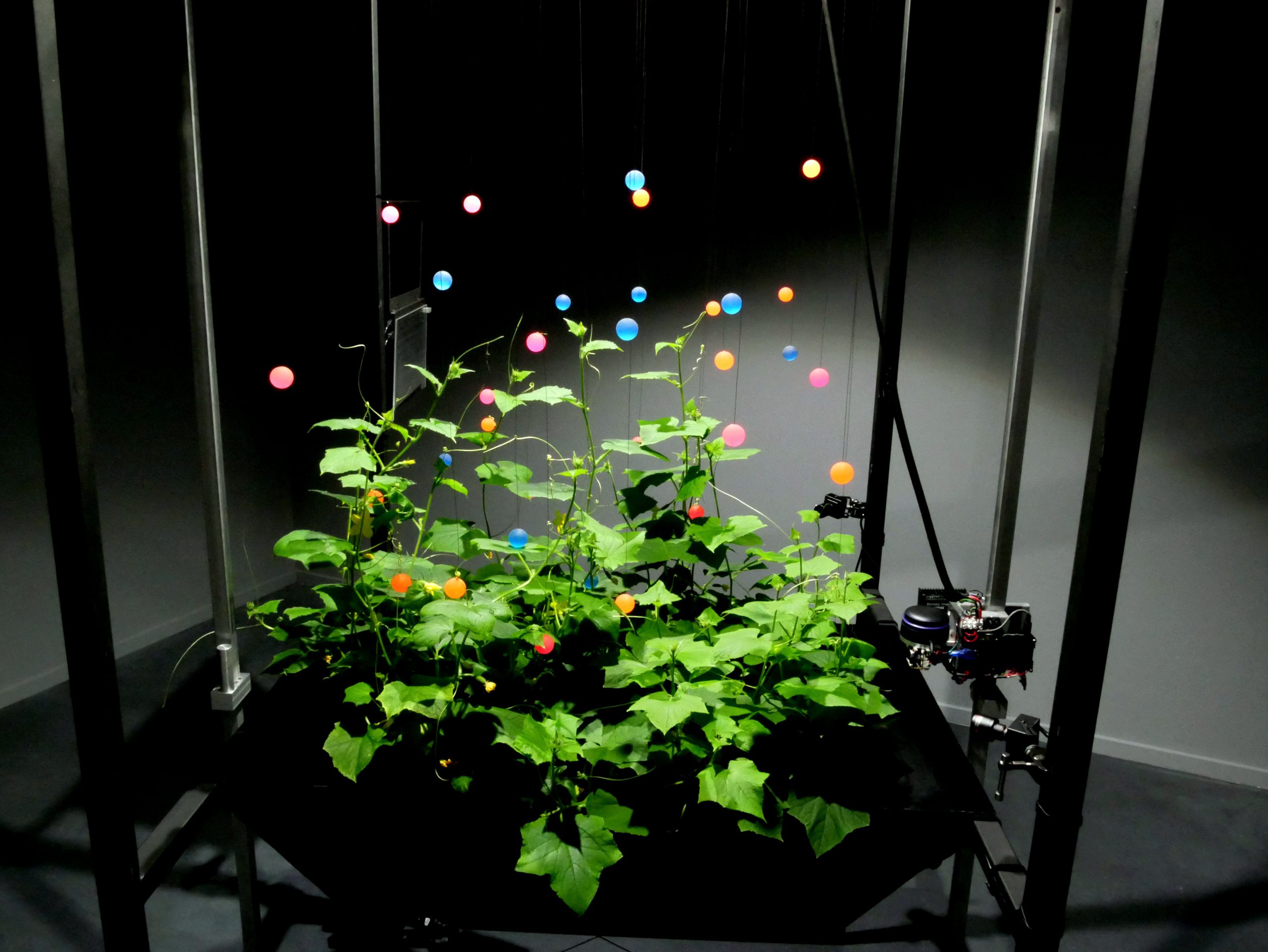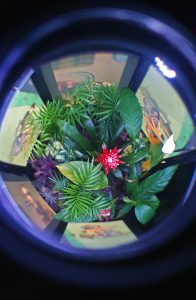Despite the crucial role plants play in our lives – they give us oxygen, food, medicine, clothes, energy and colour – we have little regard for them. With the exhibition Life of Plants, curator Wende Wallert tries to change how we view plants.

Colours from De Boelelaan
The work Searching for Florachrome is a triptych, explains Eszter Rácz, a VU student and assistant of the art gallery. “The artists of this work experiment with how they can learn from the colours of plant life. They extract natural dye from plants, and then use photography to make their art.” The artists have created a vibrant display on the gallery’s window. Its colours are specific to VU, Rácz explains. “You see that strip of vegetation over there at De Boelelaan? The artists used plants from that strip to obtain the dyes for this artwork.” Further down in the gallery, the sixteen dyes are on display in a showcase, next to black-and-white prints of the local plants used for the artwork.
Healing powers
The largest artwork is a wall-covering piece by photographer Elspeth Diederix, commissioned by Amsterdam UMC. It is made up of unedited photographs, and filled with plants that have medicinal properties. Take the bright white snowdrop flower for example, which contains galantamine, a compound used to slow down cognitive decline in Alzheimer’s patients. Or the vivid red poppy, from which opioids are extracted. The flowery wall shows us the healing power of plants.
Colonial plants
While most works are colourful and vivid, the installation by Ecuadorian artist Oscar Santillán is the opposite. It’s a bullet-shaped black metal steel case with nothing much to see – from the outside, that is. Because if you take a closer look, you’ll find a little peephole at the top. Through this, you can see the inside of the case, which is filled with plants. They are lit by six screens displaying apocalyptic films, keeping the plants alive with their tragic light.
The casing is inspired by a so-called Wardian case, a transparent portable greenhouse used in the 19th century. Rácz: “They were used to safely bring back exotic flowers from colonized countries to the Western continent. With these Wardian cases, colonizers would show the richness of colonialism back home.” With his installation, Santillán wants to show how colonization destroyed ecosystems and that this paved the way for our current exploitation of the planet.
Playful interaction
For the final artwork, PL’AI, artist Špela Petrič collaborated with VU Amsterdam researchers. Together, they designed an AI robot that interacts with a planter full of cucumber plants. Pink, blue and orange bouncy balls hang from individually controlled wires, giving the artwork a lively impression. Through cameras, the robot tracks the movements of the plants, after which an algorithm determines where so-called play might occur: plant tendrils that coil around the hanging wires, enabling the plant to climb and grow. “The AI robot has a much more intimate relationship with the plants than we humans can ever have”, says Rácz. That raises the question: should we be jealous of this robot?


